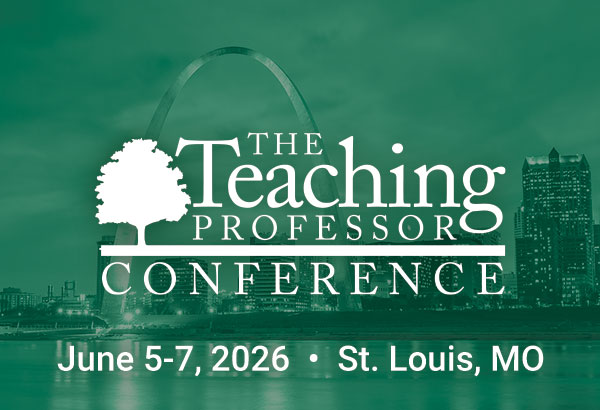The liberal arts college where I teach recently underwent review for accreditation. Like many other colleges and universities, we were criticized for our lack of assessment. Faculty resistance, it seems, may be the biggest barrier to implementing institutional assessment measures (Katz, 2010; Weimer, 2013). Both Weimer and Katz accredited faculty resistance to fears that assessment data could be used for “comparison shopping” and “educational consumerism.” While these fears are justified, at my college another fear prevails; the fear that assessment will lead to hand-holding strategies that will discourage independent thought in our students and result in failure to adequately prepare them for professional life.
Let me give you an example. At my college, each professor is encouraged to pick one assignment or class activity per semester for formative assessment and to write a report on how he/she will better help the students achieve a desired outcome next time. Formative assessment is undoubtedly useful, however, the professor now feels pressured to find strategies for ensuring that students perform to his/her new standards. Invariably, this involves temptation to provide the students with a grading rubric and/or guidelines that are so comprehensive that the student can be left in no doubt as to what is expected. As a result the students do better at said assignment and their grades improve. The administrators are delighted and use it to exemplify how assessment is improving learning at their institute, but the professor is left with the uncomfortable feeling that he/she has encouraged over-reliance on guidelines that stifle creativity and independent thought and that his/her students will not be able to accomplish future projects without the same explicit instructions.
In his book The Global Achievement Gap, Tony Wagner, co-director of the Change Leadership Group, Harvard School of Education, identified the top four skills needed to get a good job as: critical thinking and problem solving, collaboration and leadership, agility and adaptability, and initiative and entrepreneurialism (Wagner, 2010). Most faculty understand the need to help students develop these abilities, but feel that they are being pushed into coming up with short-term strategies (such as grading rubrics) to improve student performance in the classroom at the expense of developing sustainable, higher order thinking skills.
At my college, we use capstone courses to assess students’ independent thinking proficiency. Recently however, we have experienced that, despite doing reading, writing, and analytical thinking exercises in their classes for three years, many of our students are still unable to independently perform these tasks in their capstone course and repeatedly ask for more guidelines. So how do we help students meet our outcomes expectations without compromising their independence or future success in the workplace?
One way to do it is to hand the task of formative assessment over to the students. Rather than simply telling them what we expect from them, we can challenge them to determine for themselves what the characteristics of a well done assignment are. I have done this in my classes and have found that when incited, most of my students had quite a good understanding of what a quality assignment should look like, but were afraid to use their intuition. In several of my classes, I have encouraged students to design presentation review worksheets to help them understand what a good presentation should resemble. They used the worksheets to prepare their own presentations and to review presentations by peers. The worksheets were essentially rubrics disguised as guidelines that the students came up with themselves (Robertson, 2012).
I have also asked students to write their own guidelines for writing a lab report. I frequently have students edit and grade their own, first drafts of papers, and I sometimes ask them to write short essays critiquing their own work and describing the improvements they think they should make, as well as the resources they will use to help them. The quality of assignments has improved in my classes, and the students also experienced the process of independently planning, writing, and editing their own work. More importantly, they started to let go of their dependence on highly detailed guidelines from me.
Assessment is probably not going to go away any time soon, and my examples above are simply some suggested techniques that I have used in an attempt to not allow assessment to compromise my teaching while helping students develop important new skills. Self-evaluation is a big part of tenure and promotion for many faculty and most of us appreciate its value for our own professional development. Required assessment has become, for me, an opportunity to teach self-evaluation to my students.
References:
Katz, S. N. (2010) Beyond Crude Measurement and Consumerism. Academe, 96 (5). Available online at www.aaup.org
Wagner, T. The Global Achievement Gap: Why Even Our Best Schools Don’t Teach the New Survival Skills Our Children Need &ndash and What We Can Do About It. New York: Basic Books, 2010.
Weimer, M. (2013) The Assessment Movement: Revisiting Faculty Resistance. Faculty Focus, January 18th. Available online at https://www.facultyfocus.com/articles/educational-assessment/the-assessment-movement-revisiting-faculty-resistance/
Robertson, K. (2012) A Journal Club Workshop that Teaches Undergraduates a Systematic Method for Reading, Interpreting and Presenting Primary Literature. Journal of College Science Teaching, 41 (6) 20-26.
Dr. Katherine Robertson is an associate professor of biology at Westminster College, New Wilmington, Pa.





